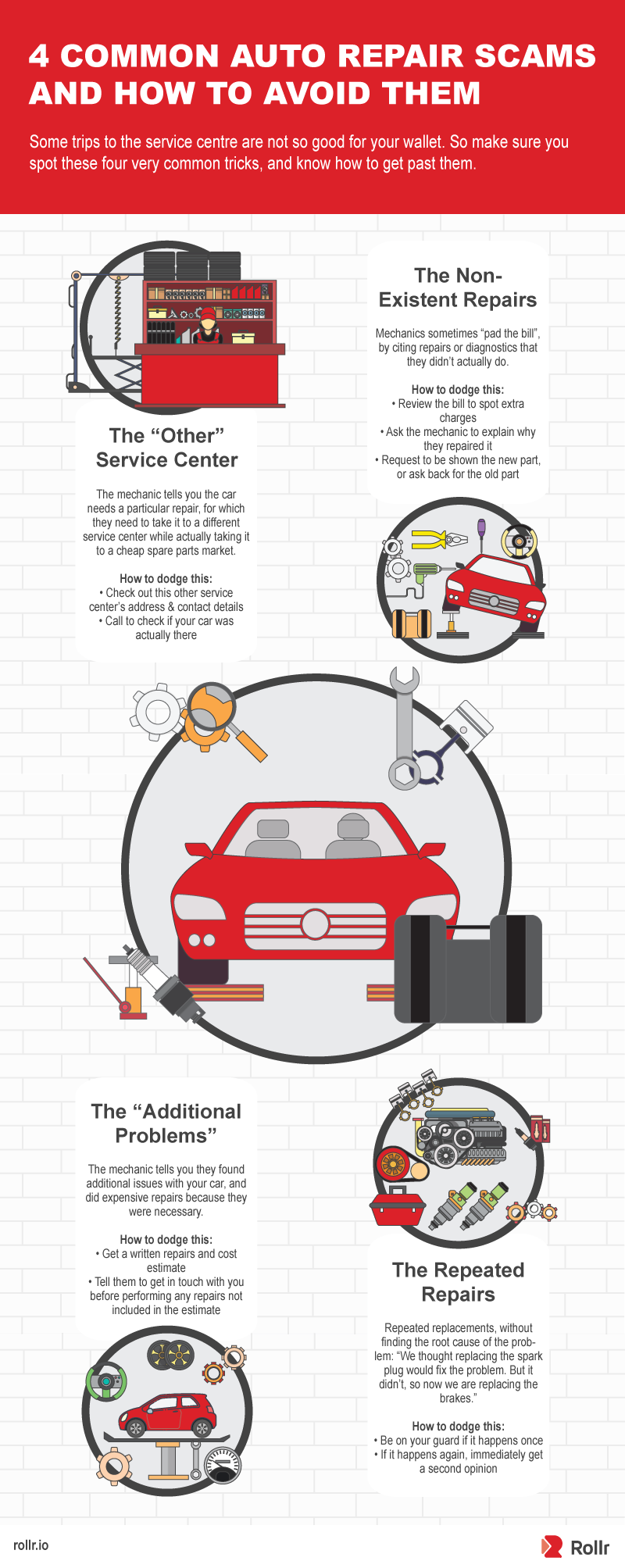
Every car owner has had at least one bad experience at the service centre. And more often than not it involves them charging you way more for the repairs than is reasonable. Want to make sure that the Auto Repair scams don’t happen the next time you drop your car at the service centre? We’ve got you covered. Here are the four most common auto repair scams, and how to not fall for them.
- The Other Service Centre
- The Non Existent Repairs
- The “Additional Problems”
- The Repeated Repairs
Auto Repair Scam 1: The “Other” Service Centre
The mechanic tells you the car needs a particular repair, for which they need to take it to a different service centre. This might be the truth, or they might just be driving it down to the local spare parts market.
How to Avoid: You should definitely check out the credentials of this ‘other’ service centre. Get the address and contact details, and call to check if your car was actually there.
Pro Tip: With the Rollr Mini GPS tracking device, you can always keep tabs on your car’s location. The trip data will tell you exactly where the car’s been taken, and you can verify if the service centre folks are being truthful.
Auto Repair Scam 2: The Non-Existent Repairs
A lot of times mechanics “pad the bill”, by citing repairs or diagnostics that do not exist. They might add a G-scan, or a parts replacement that they didn’t do.
How to Avoid: Review the bill carefully, and if there are repairs you did not ask for, question your mechanic. Ask them to explain why they repaired it, show you the new part, or ask for the old part. In case the mechanic is unable to show you the repair, or is avoiding your request, you will know that these repairs were never performed.
Pro Tip: The Rollr Mini plugs into your OBD II port, and to perform any health scans, the mechanic has to first unplug the device. If you did not get an unplugged notification, there was probably no health scan done.
Check out everything that’s possible with the Rollr Mini
Auto Repair Scam 3: The “Additional Problems”
Another common tactic to scam car owners is to tell them there were additional problems with the car. You hear about these additional problems and their expensive repairs only when you are about to pay the bill. More often than not, these are unnecessary parts replacements that have been done without your consent, and the service centre refuses to release your car till you pay the inflated bill.
How to Avoid: Get a written repair and cost estimate before you leave your car with the mechanic. Make it clear that they should not perform any repairs other than those estimated, and in case they find more problems, they should get in touch with you. This helps you stay in control of any unexpected repairs, and not have a shockingly huge bill later on.
Auto Repair Scam 4: The Repeated Repairs
We’re sure you have heard this one before. “We thought to replace the spark plug would fix the problem. But it didn’t, so now we are replacing the brakes.” Repeated replacements, without finding the root cause of the problem is one of the most common ways to scam new car owners.
How to Avoid: Do not let the mechanic talk you into this. The moment you hear this line of reasoning, get a second opinion. While it could have been a one-time faulty diagnosis, more often than not it’s a ploy to bill you for costly repairs.
All said and done, the best to avoid being scammed is to know exactly what’s wrong with your car, before you take it to the service centre. And the way to do that is with an OBD scanner. It gives you a look at your car’s health and the issues that need to be fixed. That way, you know what repairs to expect, and can question the mechanic if they insist on extra work.
So before you next scheduled servicing, take a look at what the Rollr Mini OBD Tracking device can do for you, and the things to know before you buy one.







About The Author: Rollr
More posts by Rollr